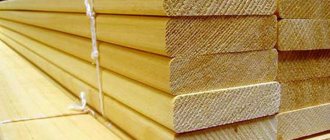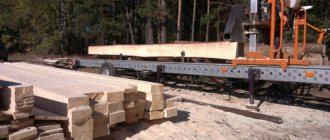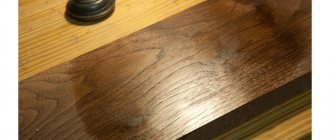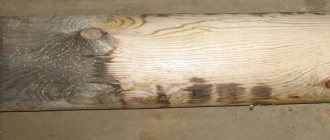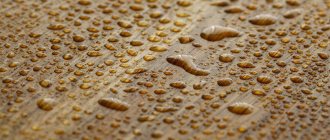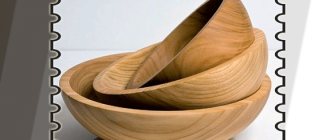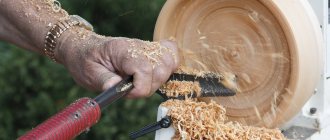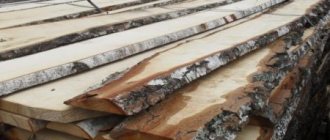Wood is an unusual and especially valuable material. For all its familiarity, it has an amazing set of technical and physical properties that humans cannot replicate with the help of synthetic substitutes. This explains the extensive use of blanks made from this material in a variety of industries.
Modern wood processing technologies and the production of wood products in general make it possible to provide people with furniture, building materials, decorations, dishes, etc. Carpentry still requires certain skills and talents from performers - only in this case can the manufacturer truly create valuable product.
What wood is used in production?
The modern woodworking industry works with blanks of various origins, which differ in technical, functional and aesthetic characteristics. These can be traditional species like oak and pine, or exotic ones - wenge, morado, rosewood, etc. About 30 species are in demand directly in Russia, most of which in one form or another find their place in construction. Nevertheless, each industry has its own requirements for blanks, which also determines the division of wood into classes. For processing, in particular, the classification of the material according to the qualitative state of the structure is important:
- Class III. The workpiece has an uneven color and layer pattern. Partial flaws and defects such as falling knots may be noted, but they are not of fundamental importance for reliability, from the point of view of the intended use. Another thing is that the commercial class of products made from such wood will be low.
- Class II. Uneven coloring and minor imperfections on the surface also appear. With proper processing, the manufacturer can obtain an externally decent material, but it is unlikely to count on high decorative properties.
- Class I. Smooth, solid and natural-colored workpieces that are in a suitable condition for almost all types of processing and areas of further use. Limitations are determined only by the characteristics of the tree species to which the workpiece belongs.
Who to work with?
College graduates work:
- logging technicians;
- woodworking technologists;
- site foremen;
- operators of automatic and semi-automatic lines.
The responsibilities of a logging specialist include:
- Preparation and organization of the logging process under the guidance of senior technologists or engineers.
- Monitoring compliance with established standards and safety norms during the production process.
- Quality control of raw materials and finished products.
- Calculation of the required amount of materials, ways to optimize it.
- Estimation of costs at all stages of the production process.
- Testing of materials and products.
A graduate of woodworking technology without sufficient experience can expect a salary of about 30 thousand rubles. He will have to work in forestry or logging; relocation is also possible, since the largest number of farms are concentrated in the northern and eastern regions. In central Russia they also exist, but in smaller quantities.
A technologist in a carpentry workshop or other woodworking enterprise is engaged in:
- Development of projects in accordance with technical specifications and current standards.
- Optimization of the production of individual blanks, parts and the product as a whole.
- Preparation and maintenance of technical documentation.
- Testing product quality and identifying the causes of defects.
- Other job responsibilities.
He works under the direct supervision of an experienced engineer. The average salary is 49 thousand rubles.
What is wood processing?
From forestry, the material is not immediately sent for the production of final products. Until this moment, the logs undergo several stages of special preparation, during which the semi-finished products necessary for specific tasks are formed. Depending on the intended type of wood processing, the following blanks can be obtained at the stage of primary processing of raw materials:
- round timber;
- boards;
- veneer;
- timber
Preparation operations in most cases mean cleaning and sawing in several versions, but depending on the requirements for semi-finished products, preservative and protective operations can also be performed using chemical impregnations, varnishes and paints. However, chemical methods of influencing wood blanks will be discussed below.
What to consider when equipping a sawmill
- An indicator of the productivity of the sawmill, as well as the nature of the process - machines or production line.
- The amount of investment to be invested, the possible actual profitability of production and the repayment period of loan obligations.
- The raw material base, as well as the species and working diameters of saw logs that the machine is capable of processing.
- Final processed products. How much is in demand in the market, production cost.
- Capabilities of equipment for the production of European standard products.
- Yield coefficient of useful material.
- Strict requirements for sawlog subsorting.
- Woodworking shop area.
- Operating temperature of the machine.
- Cost and average frequency of saw blade replacement.
- The complexity of servicing saws. This also includes: the qualifications of a sharpener and sawmill, the equipment necessary for servicing saws.
- The ability of the machine to perform the function of a conveyor of finished products within the workshop.
- Maintainability of spare parts and their cost.
- Labor intensity and cost of servicing the machine itself.
- Technology requirements for the presence of a foundation.
- Manufacturer's stated service life.
To content >>>
Mechanical restoration
The oldest, but still relevant to this day, woodworking method, which is accessible to almost everyone. During the work, a physical impact is exerted on the workpiece in order to change its shape. Technologists use the special quality of wood structure in the form of its ability to divide along the fibers. For example, this property is successfully used when chopping firewood. This is the simplest type of manual wood processing, but in the production process, of course, there are more complex tasks. The advantages of this method include environmental friendliness, efficiency and speed of processing. But, from the point of view of technical organization, this is a rather complex and expensive method when it comes to large production lines.
Characteristics of professional activity
Students study theoretical foundations and gain practical skills that, upon graduation from college, will allow them to conduct production processes related to wood processing and organize the work of structural divisions.
The objects of their professional competence are:
- materials;
- technologies;
- woodworking equipment, tools;
- design documentation
The qualifications of a certified technologist allow him to:
- Participate in the organization of specialized production.
- Directly manage the work of a branch, representative office, workshop, or other structural unit.
- Perform work in one or more professions.
- Choose methods and methods for implementing production tasks.
- Evaluate the effectiveness and quality of work.
- React quickly to unusual situations and make responsible decisions.
- Seek and use information that increases work efficiency and personal effectiveness.
- Use information technology and other communications in daily work.
- Interact with the team and subordinates, correctly distribute tasks, control the result and take responsibility for it.
- Use computer-aided design systems when planning woodworking processes.
- Make maps for each stage of the technological process.
- Calculate the consumption of materials and raw materials.
- Plan the work of the workshop, analyze the production process and its effectiveness.
- Solve current problems and assess risks.
Basic operations of mechanical woodworking
In order to give the workpiece the desired appearance, it must be processed with the necessary parameters. In practice, wood processing industries carry out dozens of operations of this type, many of them performed on the same multifunctional lines. Just processing wood on a lathe may involve boring, countersinking, drilling, reaming and other work operations. In a broader scope, you can imagine operations of a different format:
- sawing;
- cutting;
- trimming;
- grinding and polishing;
- planing;
- chiselling;
- milling;
- thicknessing.
Machining Equipment
As great a variety of mechanical woodworking operations is, the range of technical means by which these works are carried out is equally wide. The most popular are units for providing wood turning technology, during which cylindrical parts of the desired shape are obtained. The turning operation can also be performed manually, when the operator holds the working tool in his hands without using a holder, but most often modern machines of this type operate in fully automatic mode.
Other types of woodworking equipment include milling, sizing, jigsaw, circular and slotting machines. Again, manufacturers strive to combine several functions on one bed, so most factory units provide for the implementation of several operations - just change the operating mode of the electric motor and update the equipment.
Woodworking technology. Textbook
Preface.
Wood is a material that man began to use in the earliest stages of his existence, therefore the modern development of human society is associated with the use of wood in everyday life, construction and art. Currently, up to a thousand types of products are made from wood. This was made possible through the effective use of wood and its combination with new materials, which improved its properties. The main advantage of wood as a natural material is that its resources are renewable.
One of the components of the timber industry complex is the wood processing industry, which includes various industries that can be divided into two main groups: primary and secondary wood processing. The group of primary wood processing includes industries that are characterized by the consumption of timber. These include the production of lumber, the production of veneer, plywood, wood boards, plastics and other wood materials, as well as the production of semi-finished products from them by mechanical, hydrothermal processing and gluing.
The group of secondary wood processing includes mechanical processing of wood and gluing semi-finished products from it in order to obtain parts that subsequently undergo protective and decorative finishing, are assembled into units, and then into a specific product. The authors hope that the materials presented in this textbook will help students work successfully in the modern woodworking production system.
Table of contents. Chapter 1. Timber industry complex 4 1.1. Structure of the timber industry complex 4 1.2. Raw materials resources of Russia. Problems of ecological forest management S 1.3. Woodworking industry. Economic and social aspects of its development 6 1.4. Scientific and technological progress in timber industry complex 7
Chapter 2. Structure of wood 9 2.1. Parts of a growing tree. Tree trunk structure 9 2.2. Macroscopic structure of wood 11 2.3. Microscopic structure of wood 13 2.4. Structure of coniferous and deciduous wood 13 2.5. Chemical composition of wood and bark 15 2.6. Defects of wood 16 2.7. Physical and mechanical properties of wood 43
Chapter 3. Products of the timber industry 44 3.1. Dimensional and quality characteristics of sawn raw materials 44 3.2. Sawmill products 45 3.3. Dimensional and quality characteristics of lumber and blanks 47 3.4. Characteristics of wood materials 49 3.5. Classification of wood products 51
Chapter 4. Basic theory of wood cutting 53 4.1. Cutting process. Cutting speed and feed rate 53 4.2. Types of cutting 55 4.3. Geometry of cutter and chips. Cutting angles 57 4.4. Forces acting during cutting. Cutting mode and order of its purpose 59 4.5. Wood cutting methods 61
Chapter 5. Woodworking tools, preparing them for work 62 5.1. Classification of woodworking tools. Materials for its manufacture. Wear and durability 62 5.2. Frame and band saws 66 5.3. Circular saws 75 5.4. Milling cutters 79 5.5. Drills and slotting tools 84 5.6. Abrasive tool 88 5.7. Safety precautions in cutting tool preparation shops 93
Chapter 6. Precision manufacturing of parts 95 6.1. Precision wood processing. Absolute and relative errors 95 6.2. Nominal and maximum dimensions. Standard deviation of parts dimensions 95 6.3. Types of connections. Interchangeability 97 6.4. Tolerances and landings. Qualifications. Matching dimensions 104 6.5. Metrology. Accuracy and measuring instruments 114
Chapter 7. Surface quality during cutting 117 7.1. Causes of roughness. Roughness parameters 117 7.2. Methods for determining roughness. Roughness measuring instruments 121
Chapter 8. General information about wood processing processes 124 8.1. Production and technological processes 124 8.2. Classification of technological processes in woodworking 126
Chapter 9. Basic operations in the manufacture of carpentry, construction products and furniture 128 9.1. Carpentry works and their types. Carpentry workbench 128 9.2. Marking. Marking tool and its classification 1 129 9.3. Sawing. Hand tools for sawing. Power tools 133 9.4. Planing. Hand tools for flat and profile planing. Power tools 139 9.5. Chiseling wood. Hand tool for chiselling. Power tools 144 9.6. Drilling. Hand tool for drilling. Power tools 146
Chapter 10. Production of lumber 150 10.1. Types and methods of cutting logs. Delivery and output of products. Wood balance during cutting 150 10.2. Sawmill equipment 154
Chapter 11. Technology for the production of peeled and sliced veneer 163 11.1. Raw materials and their preparation for the production of peeled and sliced veneer. Peeling and planing processes 163 11.2. Equipment for the production of peeled and sliced veneer 164 11.3. Technical adjustment and preparation of cutting tools for peeling and veneer cutting machines 167 11.4. Drying, sorting and repairing veneer 169 11.5. Safety precautions in workshops for the production of peeled and sliced veneer 171
Chapter 12. Drying wood 173 12.1. Drying purposes. Determination of wood moisture content. Operating moisture content of wood 173 12.2. Methods for drying wood. The mechanism of the wood drying process. Drying stresses 175 12.3. Drying chambers for lumber 180 12.4. Fundamentals of lumber drying technology 184 12.5. Transport work in drying shops. Safety precautions 185 12.6. Atmospheric drying of lumber 186
Chapter 13. Manufacturing technology of plywood and plastics 190 13.1. Types of plywood 190 13.2. Preparing veneer for gluing. Bonding methods 190 13.3. Classification of adhesives. Applying glue 191 13.4. Gluing plywood and its further processing 193 13.5. Production of wood laminated plastic 196 13.6. Safety precautions in workshops for the production of plywood and plastics 197
Chapter 14. Manufacturing technology of particle boards and fibreboards 199 14.1. Wood raw materials for the production of boards and their preparation 199 14.2. Chemical materials for the production of particle boards and fibreboards 200 14.3. Production of particle boards 201 14.4. The production process of fibreboards 203 14.5. Safety precautions in workshops for the production of chipboard and fiberboard 205
Chapter 15. Cutting wood, cladding and panel materials 207 15.1. Cutting lumber. General characteristics of blanks 207 15.2. Methods and types of cutting lumber into blanks 208 15.3. Methods for cutting lumber into blanks 209 15.4. Equipment for cutting lumber into blanks 212 15.5. Layouts of workshops for the production of whole workpieces 217 15.6. Cutting slab and sheet materials 220 15.7. Safety precautions in cutting shops 221
Chapter 16. Primary processing of blanks made of solid wood and panel materials 224 16.1. Primary processing of workpieces. Basing 224 16.2. Classification of woodworking machines and their indexing 225 16.3. Main organs of woodworking machines 227 16.4. Machine diagrams 228 16.5. Mechanisms of woodworking machines and their functional purpose 229 16.6. Machines for primary processing of workpieces 233 16.7. Primary processing of slab materials 237 16.8. Safety precautions in workshops for the primary processing of blanks and slab materials 238
Chapter 17. Technology of gluing wood and wood materials 240 17.1. The process of gluing wood and wood materials. Classification of glued products. Types of adhesive joints 240 17.2. Classification of adhesives 243 17.3. Preparing workpiece surfaces for gluing 245 17.4. The main stages of wood gluing 246 17.5. Methods for gluing wood. Equipment for the production of glued products 247 17.6. Quality control of glued products 249 17.7. Safety precautions in workshops for the production of glued products 25Ya
Chapter 18. Bending of wood and wood materials 252 18.1. Wood bending 252 18.2. Classification of bent-glued elements 253 18.3. The main stages of the bending process 254 18.4. Equipment for bending blanks 256 18.5. Quality control of bent and bent-glued blanks and their further processing 257 18.6. Safety precautions in bending shops 258
Chapter 19. Final processing of blanks and slab materials 260 19.1. Processing of finishing workpieces and slab materials. Composition of operations 260 19.2. Formation of tenons and eyes 261 19.3. Milling the surface of workpieces 264 19.4. Formation of nests and holes in wood 268 19.5. Grinding the surface of parts 270 19.6. Final processing of panels 272 19.7. Safety precautions in shops for final processing of bar and panel blanks 273
Chapter 20. Technology of applying protective and decorative coatings to parts made of wood and wood materials 275 20.1. Purpose of protective and decorative coatings. Types of finishing parts 275 20.2. Surface cladding. Methods for covering surfaces. Composition of operations 276 20.3. Technological process of veneer veneering 278 20.4. Veneering of wood and wood-based materials with synthetic materials. Caching 282 20.5. Finishing products with paints and varnishes 286 20.6. Safety precautions in finishing shops 291
Chapter 21. Technology of production of joinery and construction products 293 21.1. Classification of joinery and construction products. Basic structural elements of joinery 293 21.2. Window blocks, their properties, purpose and classification 296 21.3. Door blocks and their classification 299 21.4. Raw materials and materials for the production of window and door blocks 303 21.5. Technological processes and equipment for the production of window and door blocks 304 21.6. Assembly of window and door blocks. Installation of hinges and fasteners 306 21.7. Material consumption standards for the production of window and door units 309 21.8. Floor coverings. Classification of parquet products 310 21.9. Parquet manufacturing technology. Requirements for its quality 315 21.10. Safety precautions and environmental protection in workshops for the production of joinery and construction products 316
Chapter 22. Furniture production technology 319 22.1. Furniture production trend. Classification of furniture 319 22.2. Raw materials and materials used in the production of furniture. Accessories 321 22.3. Technological processes for manufacturing furniture 326 22.4. Furniture quality indicators 327 22.5. Methods of control and quality management of furniture 329 22.6. Safety precautions in the workshops of furniture enterprises 331
Chapter 23. Automation of production processes in woodworking 334 23.1. The meaning of automation and its essence. Classification and structure of woodworking lines 334 23.2. Features of technologies using CNC machining centers 335 23.3. Safety precautions when servicing processing centers and automatic lines 337 Chapter 24. Labor and environmental protection at woodworking industry enterprises 339 24.1. Occupational Safety and Health. Rights and responsibilities of workers in the field of labor protection 339 24.2. Occupational Safety and Health. Briefing 340 24.3. Labor protection for women and adolescents 341 24.4. Labor protection requirements for enterprise facilities 341 List of technical literature 344
Biological treatment
This is a special group of woodworking methods, the purpose of which is to obtain agricultural raw materials. The raw materials used are waste from wood processing factories - for example, sawdust, shavings, wood chips. Biological mechanical processing of wood is organized in special workshops with containers where fermentation processes are organized. Special bacteria, fungal spores and even some insects are used as activators. As a result, such processes of artificial destruction of wood make it possible to obtain feed materials, ethyl alcohol, xylitol, furfural and other derivatives of microbiological synthesis necessary for agricultural activities.
Chemical treatment
One of the main disadvantages of wood material is its low service life, which is reduced in unfavorable operating conditions. It is to maintain viability while maintaining technical and physical properties that the chemical method of wood processing is designed. The production of wood products and its semi-finished products necessarily involves the organization of separate technological sections where a set of protective procedures is carried out.
It can come in a variety of forms, including paint coatings and impregnations. The processing means used also differ. For example, fire resistance of the material is given by means from the group of fire retardants, and the application of antiseptic substances prevents the development of harmful microorganisms, which, in turn, can trigger unwanted processes of the same biological destruction.
Types of carpentry production
According to the general classifier, the following types of woodworking-related industries are distinguished:
- Production of lumber with a thickness of 6 mm.
- Production of straw, cork and all kinds of weaving materials.
- Production of panel materials. Processing wood by mechanical means in this case is especially closely combined with chemical protective impregnation, which allows the fine structure to provide high wear resistance to the product.
- Production of materials for flooring - this group includes lamellas, parquet boards, logs, etc.
- Production of wood fiber, wood flour, wood chips, etc.
- Large format production. The work of such enterprises is associated with the production of beams, timber, boards and other structural elements that are used in the construction of load-bearing foundations of wooden buildings.
Principles of wood products production
When organizing a woodworking production process, a professional manager initially sets before the workers several guiding principles according to which the technological process will take place. Principles of this kind in carpentry include:
- Functionality. The product must correspond to the anthropometric dimensions of a person; this also ensures its ergonomics and ease of use.
- Rationality. When detailing, the product designer precisely calculates the smallest characteristics, which allows the use of a minimum of funds to achieve the assigned tasks.
- Operability. Of course, wood processing processes and the production of wood products in a broad sense should be focused on giving the final item an optimal set of positive “working” properties, including strength, durability, maintainability, aesthetics, durability and reliability.
Where to work?
Graduates of the faculties “Woodworking Technology” can work:
- in furniture factories;
- in carpentry and construction shops;
- in factories for the production of matches, sleepers;
- in companies producing decorative wood products;
- in workshops for the production of interior doors;
- in sawmills;
- at logging enterprises;
- in design bureaus.
New technologies in the production of wood products
Recent changes in this area are associated with the active introduction of automated and even robotic processing and assembly lines. Even the simplest circular machines today can be provided with CNC and other means of “smart” control, which improves the quality and speed of production processes. The operating principles of machine tools are also changing. For wood processing, large enterprises use laser machines, multifunctional four-sided modules with high-precision cutters, etc.
